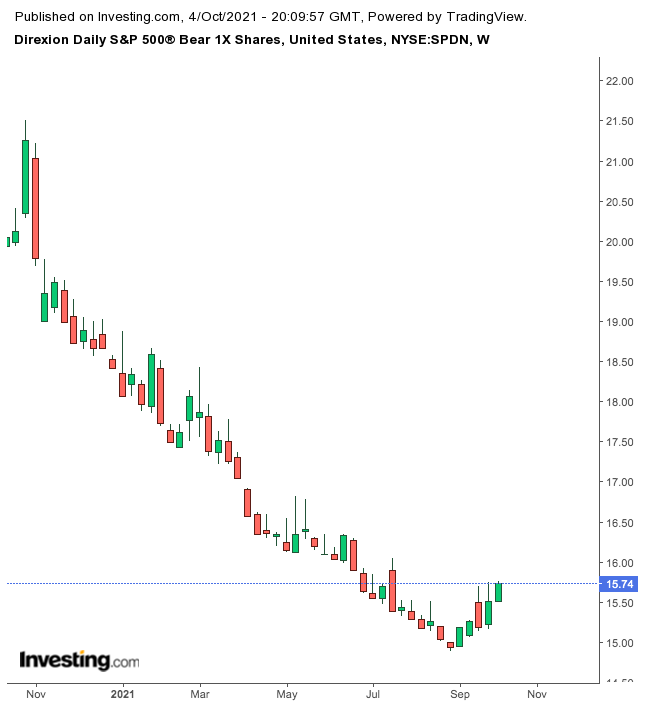October has started on a choppy note. Profit-taking, increasing yields and question marks regarding the future of the Chinese property giant Evergrande (HK:3333) (OTC:EGRNY) are putting pressure on many stocks. Wall Street has been debating for some time whether significant declines could be around the corner given how far the markets have gone up since the lows seen in March 2020. Many on the Street have been keeping a close eye on the VIX index, which is regarded as the "fear gauge” (covered here).
As a result, short-term traders wonder if inverse exchange-traded funds (ETFs) could help them hedge their portfolios and allow them to take advantage of daily moves. Some market participants also use inverse funds as tactical trading alternatives to selling out of existing positions, which could, for instance, create a taxable event.
Inverse ETFs (covered here, here, here, here, and here) are not suitable for long-term buy-and-hold portfolios. Their structure requires daily rebalancing and causes considerable deviation from the benchmark in the long run.
To achieve the objective of the inverse effect, these funds hold derivative products—mostly futures and swap contracts. Thus, over longer periods, time decay and the negative rebalancing effect come into play. Furthermore, inverse ETFs usually have higher expense ratios and lower liquidity which increases bid-ask spreads.
Before we move on to our two ETFs for today, we have to once again emphasize that while inverse funds can be hedging tools for some traders, they are not appropriate for long-term investors. They require constant monitoring as well as position rebalancing.
Big market moves, like big declines or crashes are about probabilities. This means, traders need to have a clear exit strategy, even before they establish the initial position. Having a stop-loss order could also help protect against significant losses if the position were to move away from the trader’s objectives.
1. Direxion Daily S&P 500 Bear 1X Shares
Current Price: $15.70
52-Week Range: $14.89 - $21.51
Expense Ratio: 0.45% per year
The Direxion Daily S&P 500® Bear 1X Shares (NYSE:SPDN) seeks to achieve daily investment results of the inverse (i.e., -1x, or opposite) of the performance of the S&P 500 index. The fund began trading in June 2006, and net assets stand at about $120.7 million.

Due to the compounding of daily returns, if traders were to hold SPDN for over a day, returns could differ significantly from the target. So far in the year, SPDN is down about 15.3%. On the other hand, the S&P 500 index climbed around 14.7%.
Over the past 12 months, SPDN dropped about 25.4%, while the S&P 500 increased around 28.7%. The difference in (inverse) returns is a good reminder of the fund's daily hedging purpose.
On another note, those who are more experienced with options could also consider devising their hedging strategies using options on the SPDR® S&P 500 (NYSE:SPY), which tracks the S&P 500 index.
2. ProShares Short QQQ
Current Price: $12.36
52-Week Range: $11.44 - $17.10
Expense Ratio: 0.95% per year
The ProShares Short QQQ (NYSE:PSQ) seeks daily investment results that correspond to the inverse (-1x) of the daily performance of the tech heavy NASDAQ 100 index. PSQ was also first listed in June 2006 and has $555.6 million under management.

Year-to-date, PSQ is down 14.1%. By comparison, the NASDAQ 100 index is up 12.3%. Over the past year, PSQ has lost 26.2%, whereas NASDAQ 100 has gone up 28.4%. These numbers clearly show that PSQ’s objective is daily, not long-term returns.
